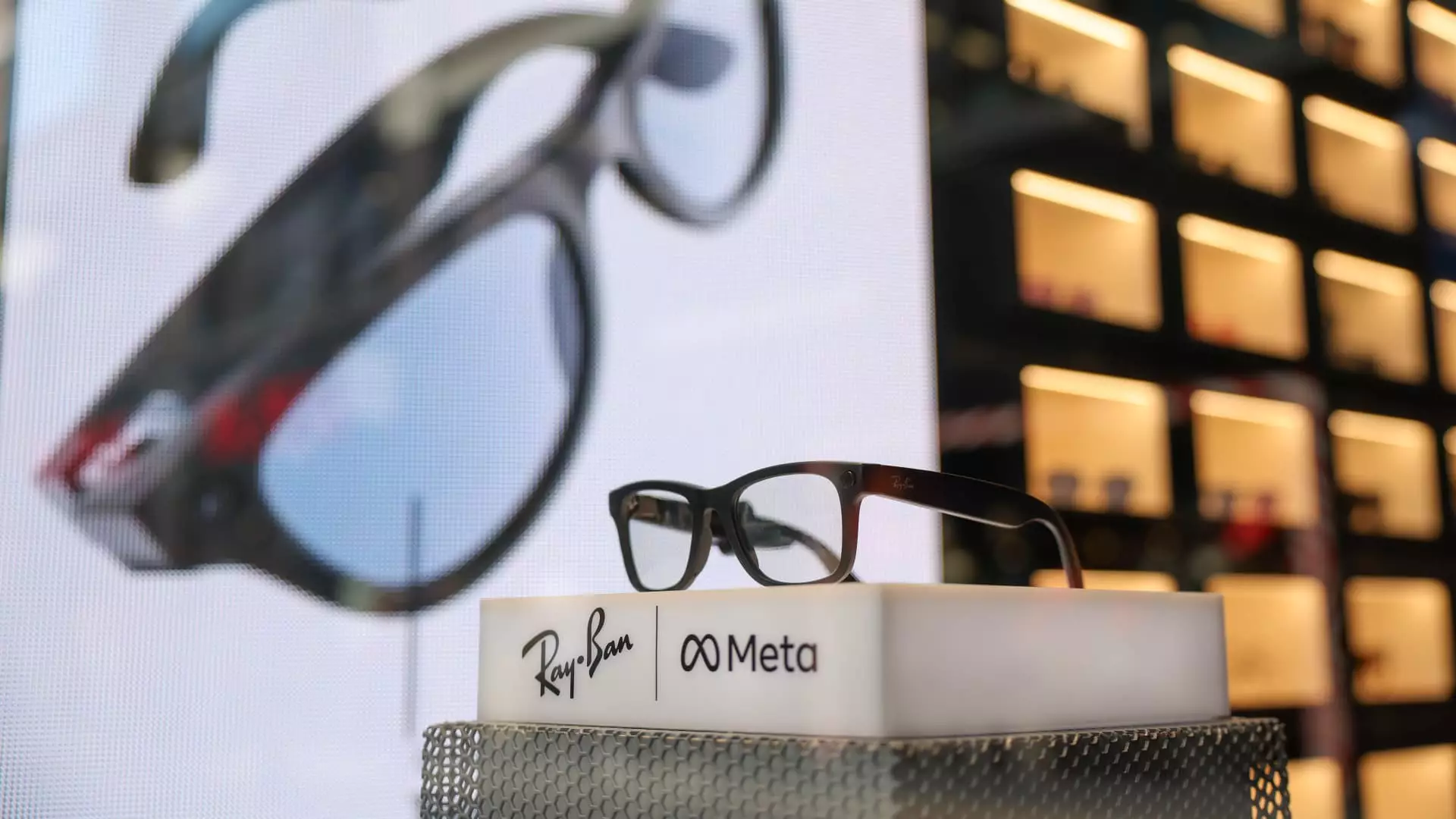As the consumer technology landscape continuously evolves, smart glasses are emerging as a front-runner in the wearable tech sector. This trend coincides with the onset of the fall consumer tech season, showcasing innovations that extend beyond traditional devices like smartphones and tablets. Unlike Apple’s sophisticated Vision Pro or the intricate virtual reality headsets that dominate discussions, these smart glasses offer a more accessible entry point. With major players like Snap and Meta slated to release their versions, the competition is heating up and presenting unique opportunities for market penetration.
Recent reports indicate a notable surge in the adoption of smart glasses, particularly with Meta’s Ray-Ban Smart Glasses making headlines. Frank He, head of technology hardware research at HSBC, pointed out that the second generation of Ray-Ban smart glasses saw sales exceeding 1 million units in just the first half of this year. This marks a significant increase compared to the initial generation’s 300,000 units sold from September 2021 to February 2023. This data suggests a growing acceptance and normalization of wearable technology, driven by advancements in design and functionality.
Furthermore, HSBC analysts express optimism about the future of this market, attributing potential growth to the rising integration of AI assistants and augmented reality features. Companies like Sunny Optical, a key player in the optical market, are expected to benefit as demand for smart glasses escalates, particularly as they maintain a strategic foothold in both Western and Asian markets.
While the data reflects a promising growth trajectory, the path to widespread acceptance for smart glasses is not without challenges. Historical precedents, such as the failure of Google Glass, underline the arduous journey wearables often face in achieving mass market appeal. Google Glass, which was discontinued early in 2023, serves as a reminder that niche technology can struggle against consumer hesitance and privacy concerns. Despite significant technological advancements, consumer perception has often been a barrier to adoption.
He believes that the anticipated rise of AI-powered functions may finally facilitate a breakthrough, helping to shift public perception from skepticism to enthusiasm. With heightened interest in AI capabilities, smart glasses potentially offer functional value that could resonate with broader audiences.
The forecast for companies like Sunny Optical indicates a robust market potential. HSBC’s predictions estimate shipments of Sunny’s smart glasses to reach 2 million in 2024, expanding to 5 million by 2025. This projection hinges on increasing engagement with original equipment manufacturers (OEMs) like Xiaomi, indicating a collaborative future for smart glass production.
Moreover, Sunny Optical’s diverse product line, which extends beyond smart glasses to include components for automotive and medical applications, suggests resilience in a volatile market. Despite facing intense competition in both the smartphone and automotive sectors, there is cautious optimism regarding their positioning as a supplier of optical technology.
As the market response becomes more optimistic, investment analysts have begun adjusting their outlooks on companies tied to the smart glasses market. HSBC’s target price for Sunny Optical is set at 58.90 Hong Kong dollars, reflecting a substantial upside potential. This positive sentiment is echoed by increased fiscal revenue reported from both European and U.S. markets, driven primarily by strong sales of Ray-Ban smart glasses.
However, not all analysts share this enthusiasm. Some firms like JPMorgan advise a more cautious approach, maintaining a neutral position due to comparatively slower growth in high-end smartphone products and a potential slowdown in the automotive sector. The balance of market predictions demonstrates the complexity surrounding the investment landscape in smart glasses and wearable technology as a whole.
While smart glasses are making headway into mainstream consumer technology and offer an enticing peek into the future of wearables, they face an intricate web of market dynamics and consumer sentiment that will dictate their ultimate fate. The integration of AI and augmented reality functionalities serves as a potential inflection point, allowing these products to enhance user experience. The next few years will be crucial as companies like Meta and Sunny Optical continue to innovate and adapt to consumer needs, shaping the trajectory of smart glasses in the consumer technology arena.

Leave a Reply